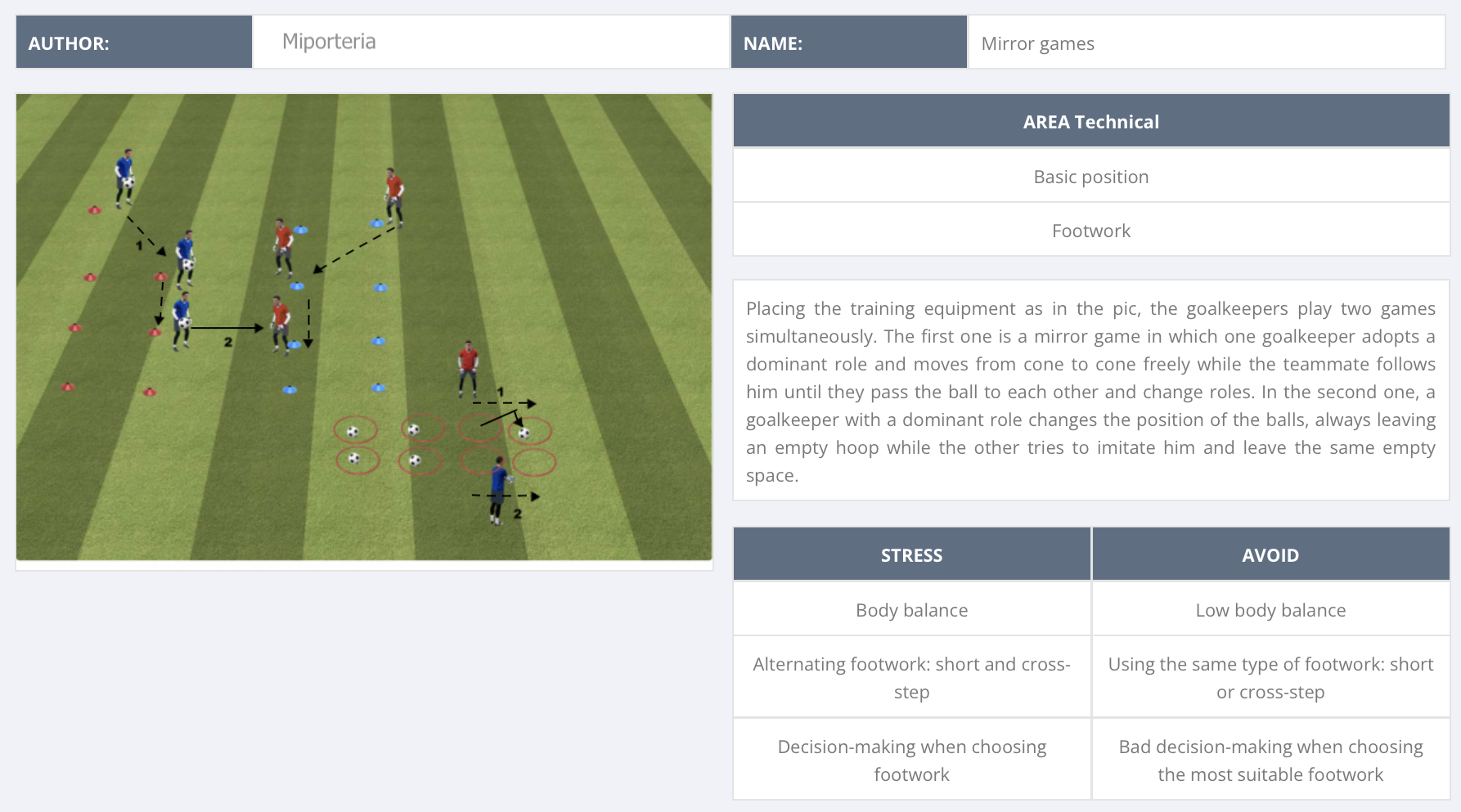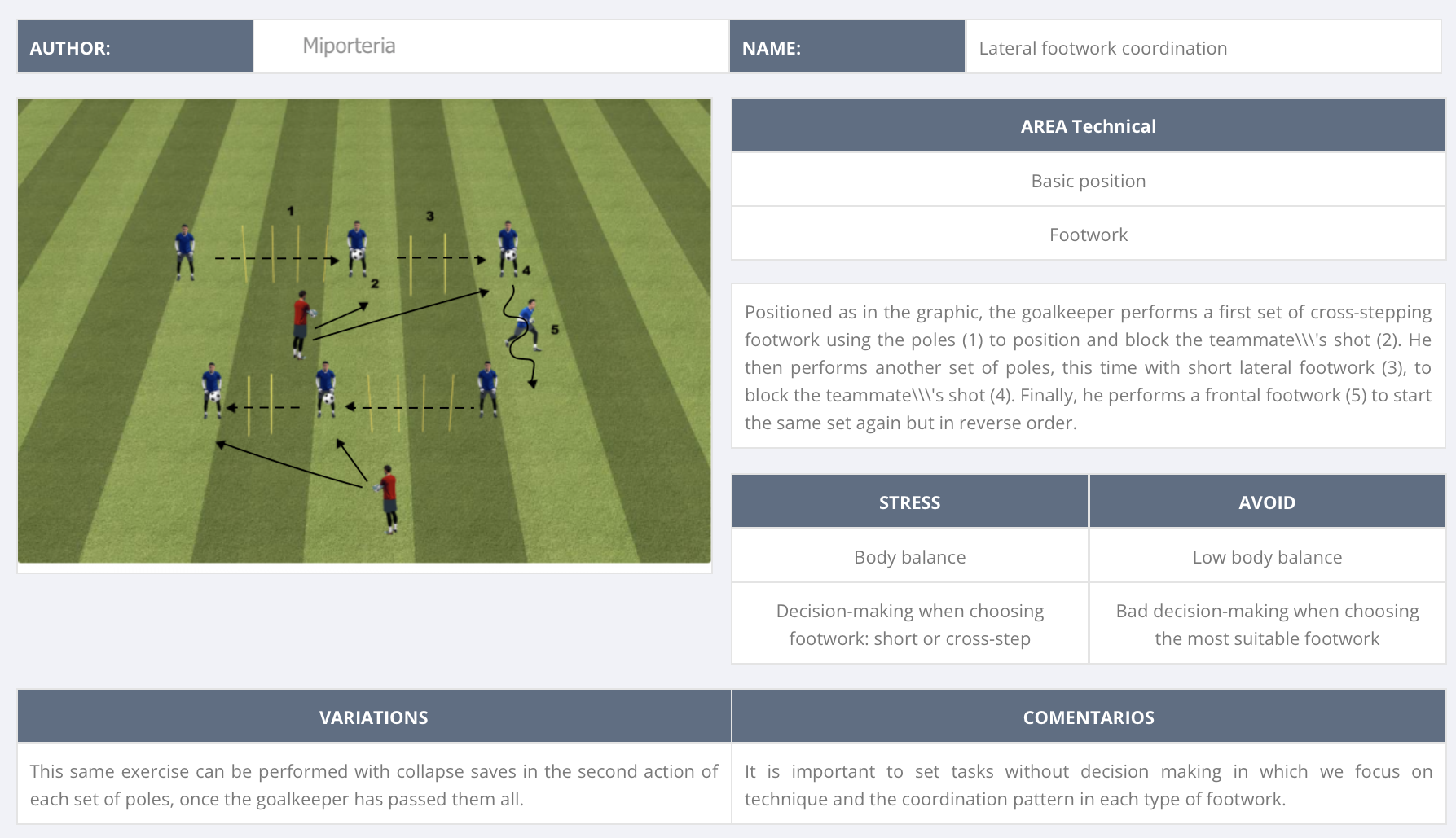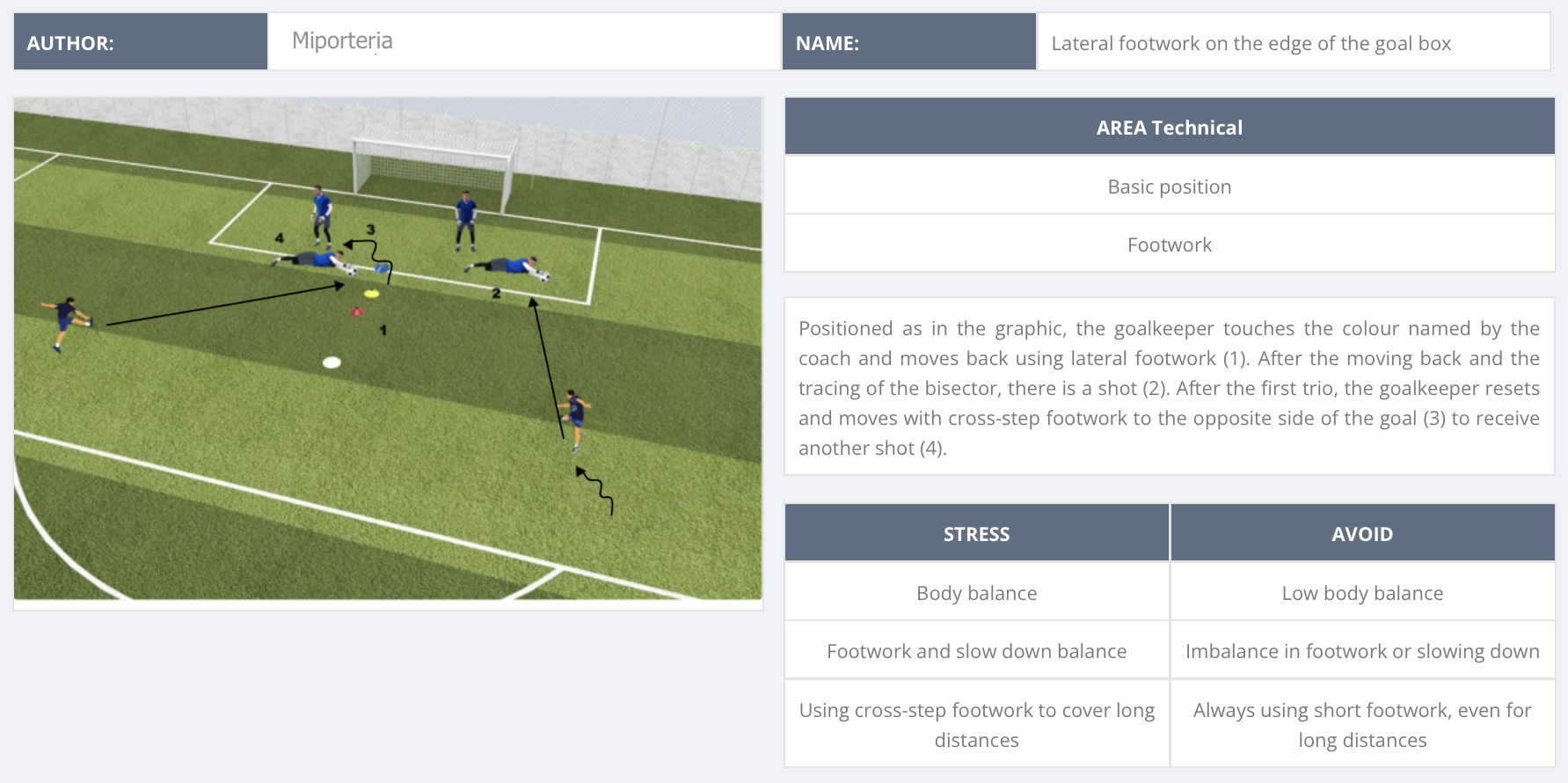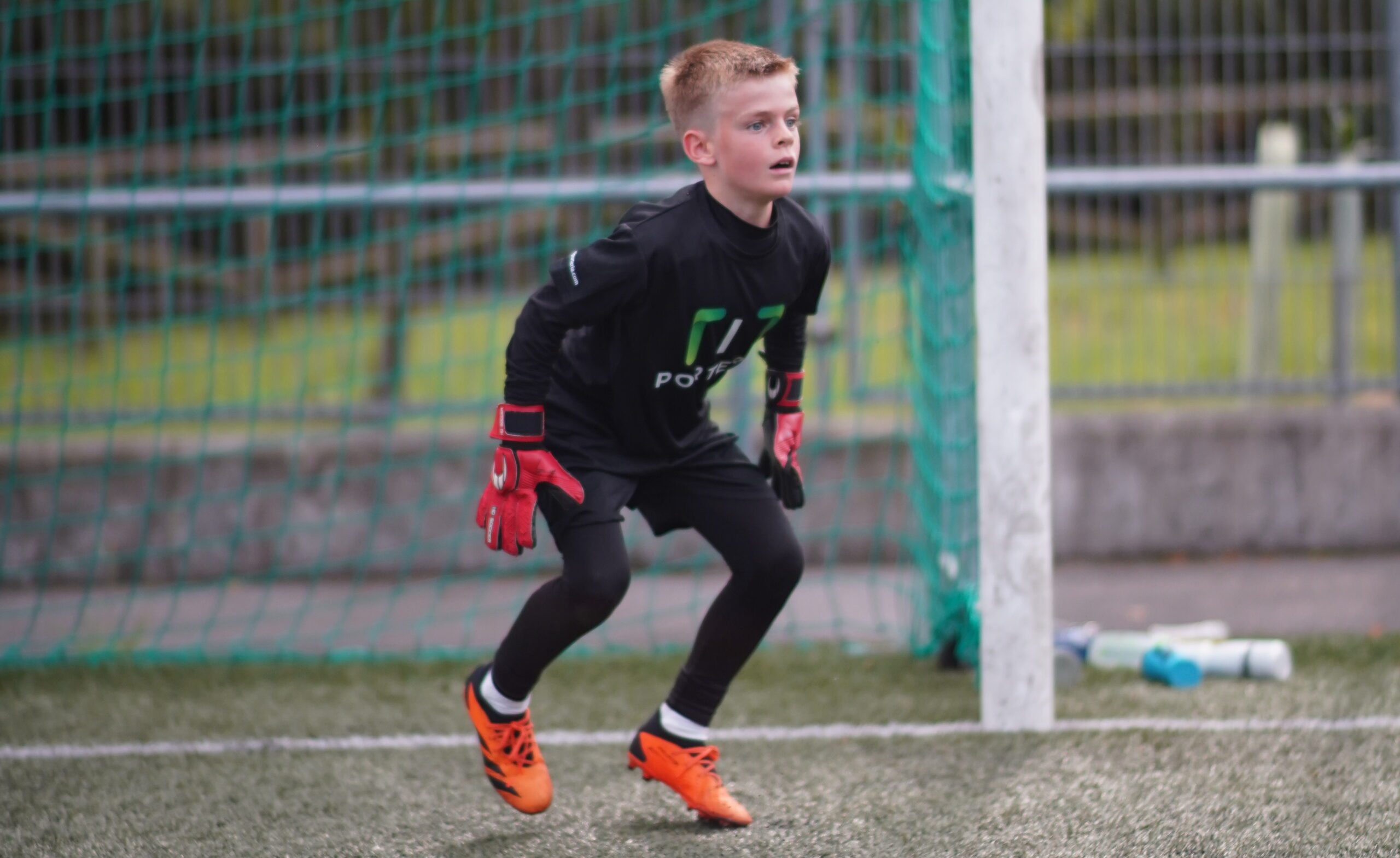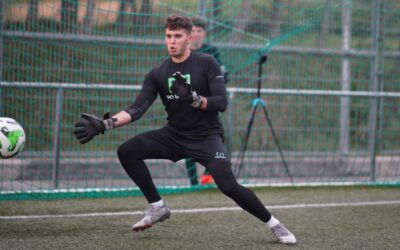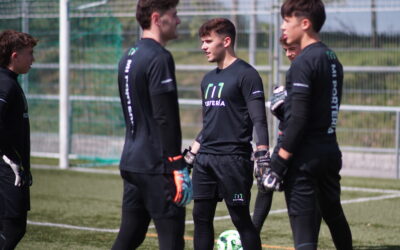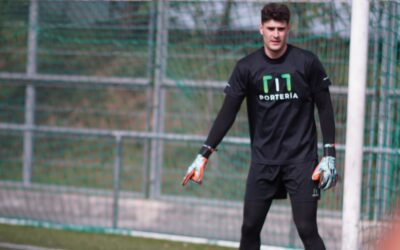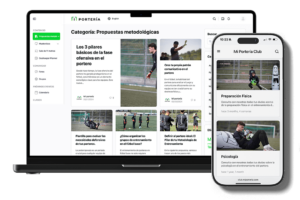Depending on the circulation of the ball across the width of the pitch, the goalkeeper has to perform footwork over very different distances. There are situations in which he covers very short distances, for example those resulting from short distance passes between opponents, such as a circulation between midfielders, and others in which he is forced to cover longer distances, for example when there is a change of direction.
Depending on how the game evolves, the goalkeeper must follow it trying to maintain an active profile on the ball that predisposes him to intervene directly or indirectly on it.
Here you are four exercises in which we force the goalkeeper to make a decision on which lateral footwork to use, short distance or cross-step, depending on where he is moving to intervene.
In the first two exercises (recommended for the warm-up), the goalkeepers play two mirror games and perform a sequence of lateral footwork using slalom poles. As we can see, both games force them to perform shorter displacements in which they will use short footwork, and longer ones in which they will use cross-step footwork. In addition, the task with the poles helps to improve the technical coordination pattern in a conscious way, work that will later benefit the speed in the moves with the goalkeeper focused on the game.
Next, we propose two drills for the initial or central part of the training in which the goalkeeper intervenes on the ball, but previously he has to perform a short footwork or cross-step footwork towards the place of intervention. At all times we have the power through our instructions to condition the decision making in the movement, because depending on what we say, the goalkeeper will have to travel a shorter or longer distance, and consequently use one type of footwork or another.
